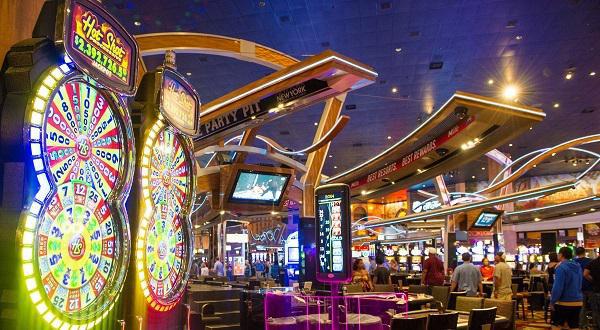
Gambling games have long captivated human interest, drawing gamblers into a world filled with luck, planning, and the allure of thrill. Each game is meticulously crafted not just for enjoyment, but also to inspire targeted emotional responses that keep players involved and committed. Understanding the drives behind these designs reveals much about how human psychology plays a vital role in the gaming experience.
From the bright lights and lively sounds to the intricate layering of systems and payoffs, casino games are designed to create an atmosphere of thrill and eagerness. Game designers leverage mental cues to influence gambler behavior, whether through the use of winning opportunities, close-call situations, or social connections. By examining these aspects, we can better appreciate how casino games fulfill not just a want for entertainment, but underlying psychological needs for excitement and hazard.
Grasping Gamer Behavior
Casino games are designed with a thorough grasp of player psychology, which is essential for attracting and holding players. The excitement of the game, combined with the expectation of winning, establishes a formidable draw. Game designers make use of elements like sonic elements, vibrant graphics, and immersive gameplay to engage attention and generate emotional responses. VN88 These sensory experiences enhance the immersive experience, making players feel more involved in the game.
Another significant aspect of player behavior is the notion of risk versus reward. Casino games often balance high-stakes situations with the potential for substantial rewards, which can result in the occurrence known as near-miss phenomenon. When players come near to winning, the brain produces dopamine, strengthening their behavior and prompting them to continue playing in pursuit of that elusive win. This cycle of wish and letdown plays a crucial role in how games are structured and advertised.
Lastly, community aspects also play a pivotal role in player behavior at casinos. Many games are made to be played in teams or alongside other players, nurturing a sense of community and shared experience. The social interaction inherent in games like blackjack enhances enjoyment and can result in longer play sessions. Designers leverage on this by crafting environments that prompt players to linger, interact, and return, making the overall casino experience more appealing.
The Role of Visuals and Audio
Visuals and sound play a vital role in enhancing the gambler’s experience within gambling games. Designers utilize vibrant colors, eye-catching graphics, and captivating animations to capture players’ attention and sustain their interest. The use of themes, such as exploration or luxury, helps create an enthralling atmosphere that transports players into a different world. By connecting to the senses, these elements add to a intensified emotional response, prompting players to engage more deeply with the games.
Audio design is just as important in enhancing the experience of gambling games. The mix of ambient music, audio effects for winning combinations, and environmental noises creates an auditory landscape that keeps players enthralled. Audio cues associated with wins, such as ringing bells or festive music, evoke feelings of excitement and reward, encouraging players to keep playing. These audio cues are carefully placed to enhance the thrill of the game and create a more immersive experience.
Moreover, the alignment of visuals and sound is essential for reinforcing the game’s overall concept and mood. Each element should coordinate seamlessly to create a cohesive experience that draws players in. The effective use of this synergy not only enhances user satisfaction but also increases the chances of return play, as players become more invested in the immersive world that the gambling games offer. This thoughtful integration of visuals and audio ultimately enhances player involvement and loyalty.
Incentive Structures and Engagement
The creation of gambling experiences greatly relies on reward structures to keep players engaged and returning for additional experiences. These structures are based in psychological theories that exploit human behavior and motivation. Participants are often motivated by the excitement of success, which is reinforced by immediate feedback through the game’s design. This prompt satisfaction not just improves the overall experience but also cultivates a sense of achievement, encouraging participants to keep participating in hopes of bigger rewards.
Gaming establishments adopt various reward structures, including jackpots, extra rewards, and multipliers, to captivate players. These elements create a layer of excitement that maintains interest. Additionally, the unpredictability of outcomes plays a significant role in sustaining interest. The intermittent reinforcement schedule, where wins are random but occur often enough, keeps participants on edge and motivated to keep playing. This loop of hope and expectation is foundational to the success of gambling experiences.
Moreover, community aspects, such as competitive events and collaborative options, enhance the participation factor by tapping into the competitive nature of participants. The communal aspect of playing with fellow participants can intensify the thrill of success and create a sense of community within the gaming space. By combining these social dynamics with effective incentive structures, gambling experiences don’t just offer entertainment but also foster a deeper connection among players, reinforcing their commitment to the overall experience.
